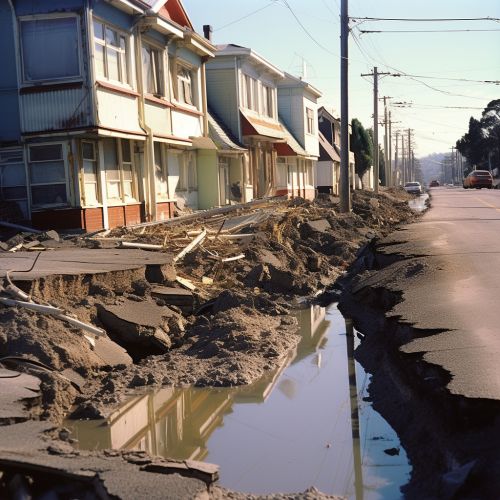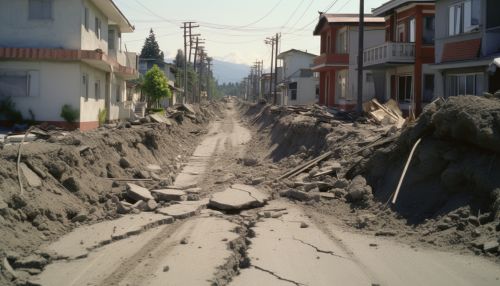Soil liquefaction
Introduction
Soil liquefaction refers to a phenomenon where a saturated or partially saturated soil substantially loses strength and stiffness in response to an applied stress such as shaking during an earthquake or other sudden change in stress condition, in which material that is ordinarily a solid behaves like a liquid. In soil mechanics, the term "liquefied" was first used by Hazen in reference to the 1918 failure of the Calaveras Dam in California.
Understanding Soil Liquefaction
Soil liquefaction occurs when a saturated or near-saturated soil loses its strength and stiffness in response to an applied stress such as earthquake shaking or other rapid loading, causing it to behave like a liquid. The phenomenon is most often observed in loose, granular soils with a relatively high water table. The underlying principle of soil liquefaction lies in the mechanics of soils.
Causes and Mechanisms
The primary cause of soil liquefaction is the increase in pore water pressure and the reduction of effective stress between solid particles generated by the shaking of water-saturated sediment, often in combination with a lack of drainage, which would allow excess pore pressure to dissipate. As pore water pressure rises, a water film develops, leading to loss of contact between particles. These particles then behave as though they are in a heavy viscous fluid, hence the soil liquefies.
Liquefaction Susceptibility
The susceptibility of a site to liquefaction is determined by a number of factors including soil type, relative density, water table level, and the intensity and duration of ground shaking. Loose sands with a high water table are the most susceptible to liquefaction, while clays, silts, and gravels are less susceptible.
Effects of Soil Liquefaction
The effects of soil liquefaction can be catastrophic, leading to the failure of dams, bridges, buildings, and other structures. It can cause landslides, ground subsidence, and increase the lateral pressures on retaining walls. The phenomenon was responsible for much of the damage caused by major earthquakes around the world, such as the 1964 Niigata earthquake in Japan and the 1989 Loma Prieta earthquake in California.
Mitigation Strategies
There are several strategies to mitigate the effects of soil liquefaction, including soil compaction, soil replacement, grouting, and drainage. Other techniques include the use of stone columns, deep soil mixing, and pile foundations. The choice of method depends on the specific conditions of the site and the cost-effectiveness of the solution.
Case Studies
Several case studies highlight the destructive power of soil liquefaction and the importance of appropriate mitigation strategies. These include the 1964 Niigata earthquake, the 1989 Loma Prieta earthquake, and the 2011 Christchurch earthquake.
See Also


